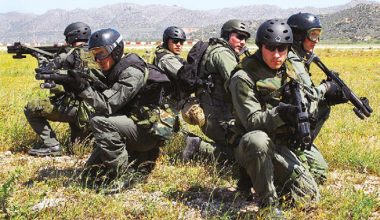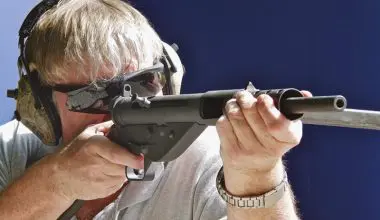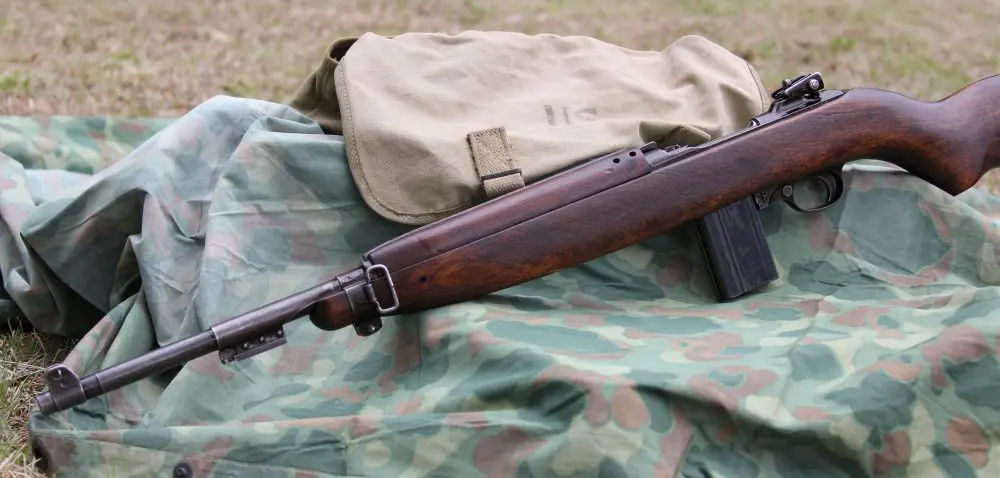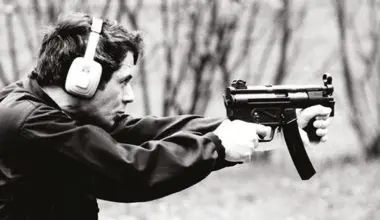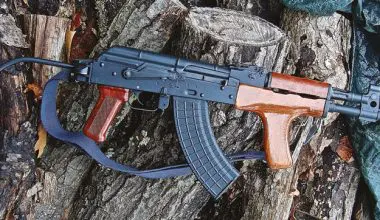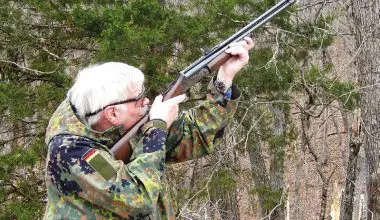I first shot an L42A1 at Warminster on a British military range over 35 years ago. I thought it was interesting, but I don’t think I impressed my British friends with my precision marksmanship that day!
Many World War II buffs will be familiar with the No.4 Mk1 (T) sniping rifles used by British snipers. These were built by selecting production No.4 Mk1 SMLE rifles that showed good accuracy, then sending them to Holland & Holland, where they were modified to sniper configuration and given the “T” designation.
Modifications included addition of a wooden cheek piece and attachment of scope mounts to take the No.32 3.5X telescopic sight. I have seen figures stating that Holland & Holland converted 26,000 rifles to sniper configuration. Many No.4 Mk1 (T) rifles continued in service for years after WWII. However, the No.4 Mk1 (T) was chambered for the .303 cartridge, and the UK had adopted the L1A1 version of the FAL in 7.62x51mm NATO.
Britain remained involved in various counterinsurgency campaigns and in Northern Ireland after 1969. Snipers proved an excellent force multiplier in these conflicts, but a sniping rifle in 7.62x51mm NATO was deemed desirable.

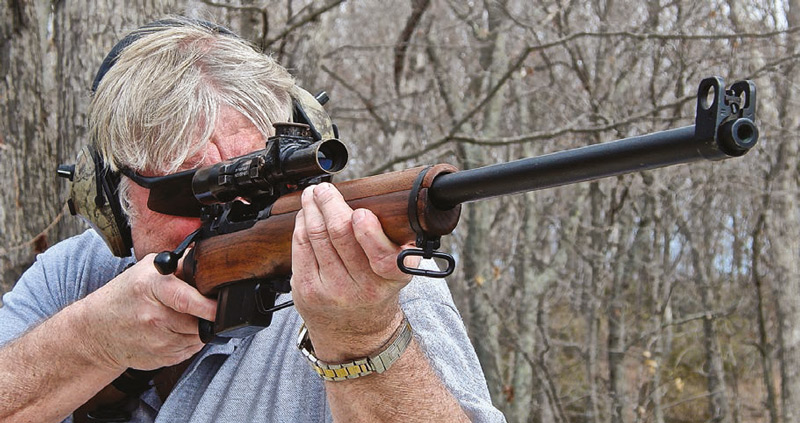
But instead of adopting an entirely new rifle, the No.4 Mk1 (T) was converted at the Royal Small Arms Factory, Enfield around 1970/1971. Changes were dictated by the conversion to 7.62x51mm NATO caliber and included an extractor for the rimless 7.62x51mm NATO round and a magazine designed for the 7.62x51mm cartridge.
Since the barrels were to be replaced with 7.62x51mm NATO barrels, they were upgraded by free-floating them. This was accomplished by cutting down the forearm to just in front of the front band. The 27.5-inch barrel was hammer forged with four lands and grooves with a right-hand twist of 1:12 inches. The rifles were designated L42A1 and were all re-proofed to make sure they were safe with the 7.62x51mm cartridge.
The latest version of the No.32 scope, the Mk3, was used. It was 4X with a BDC (Bullet Drop Compensator) on the elevation drum recalibrated for the 7.62x51mm NATO round. This scope was designated the “Telescope Straight Sighting, L1A1.” As was the case with the No.4 (T) sniping rifles, scopes were mated to the rifle and the rifle’s serial number was stamped on the scope mount and the scope’s serial number stamped on the rifle’s butt. It does not have internal rangefinding markings.
The Enfield iron sights were retained and can function as BUIS.
The L42A1 was the primary sniping rifle with British armed forces until 1985, when it was replaced by the L96A1 from Accuracy International. In Northern Ireland, the L42A1 saw a great deal of use in the counter-sniper mission and with the SAS, Paras, and Royal Marine Commandos during some stakeouts and ambushes of IRA weapons caches.
During the Falklands War, Argentine snipers proved a problem for British troops, which made the L42A1s that were deployed invaluable for counter-sniping. During the Battle for Goose Green, British Paras used their L42A1s to account for a number of Argentine troops. The SAS continued to use the L42A1 in a limited role after its replacement by the L96A1, reportedly mounting Schmidt & Bender 6X scopes on the L42A1.
I have also fired the law enforcement version of the L42A1, the Enfield Enforcer, which was used by U.K. police firearms units for many years. Although similar to the L42A1, it used a sporterized stock and German Pecar Berlin variable-power scope. Reportedly 767 Enfield Enforcers were produced.
I have not fired the L39A1, which was a version produced for British military shooting teams and which used precision iron sights. It was designed for loading each round individually.
One reason I always liked the L42A1 is that the shortened forearm helps the rifle feel light and handy even though it weighs almost ten pounds. It is a little muzzle heavy. The low mounted scope and lack of bipod allow the shooter to get quite low when shooting the L42A1, though to do the best shooting, a pack or sandbag should be used as a rest.
It also lends itself relatively well to offhand shooting, but I have to admit I really need a rest to shoot well with this or virtually any other sniping rifle. I find the wooden cheek pad relatively well positioned to give an acceptable cheek weld—but for me not an optimal one with the issue scope. The L42A1’s trigger pull is two-stage and not bad. I have not found it an extreme detriment to accurate shooting.

I actually like the post reticle on the L42A1’s scope, but it is not as precise as a crosshair. Nevertheless, I find that the post allows me to reacquire targets quickly which, combined with the fast operation of the L42A1’s bolt, gives fast followup shots. However, follow-up shots are hindered somewhat by the smooth buttplate, which allows the rifle to slip against the shoulder in recoil.
For reloaders, the ejection of brass is downward and almost into a pile.
The longest range at which I’ve shot the L42A1 was on plates at 200 yards, though I have shot it at 100 yards on paper. Using Federal 168-grain match ammunition, my best threeshot group was around three inches. Given that I have various other 7.62x51mm sniping rifles that will put three shots into half an inch at 100 yards, that isn’t especially impressive.
On the other hand, the L42A1 was designed to give some “sharpshooter” capability to British infantrymen until replaced by the L96A1, which can easily shoot half-inch groups at 100 yards. I think a better shooter would have cut at least an inch off my L42A1 groups as well, especially since I could never quite get the right cheek weld on the rifle.
I find the L42A1 most interesting from an historical point of view as the last of the Lee-Enfield rifles. Collectors seem to agree. I can’t remember what L42A1s cost when they were imported some years ago, but they are quite sought-after today. A nice rifle with the wooden box and all accessories goes for up to $5,000.
As I said, it’s a collector’s piece. One can buy a very nice sniping rifle and scope for the same price. Come to think of it, one can come close to buying an Accuracy International!
